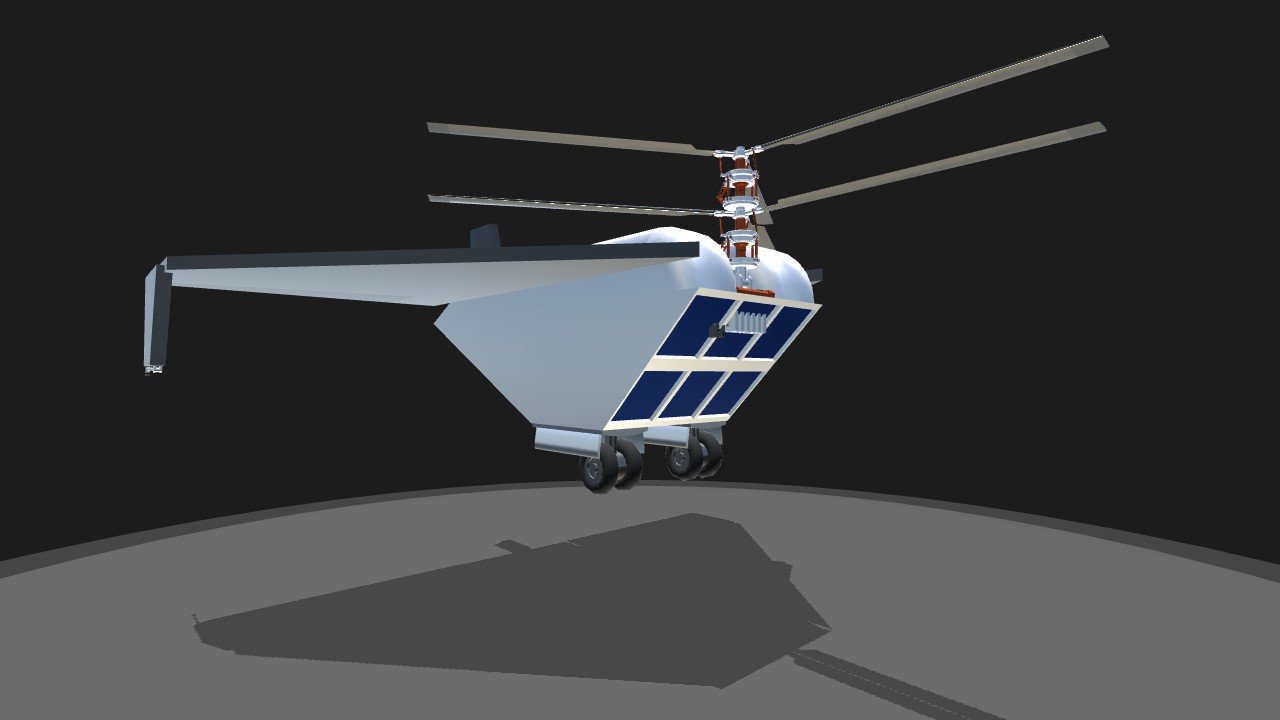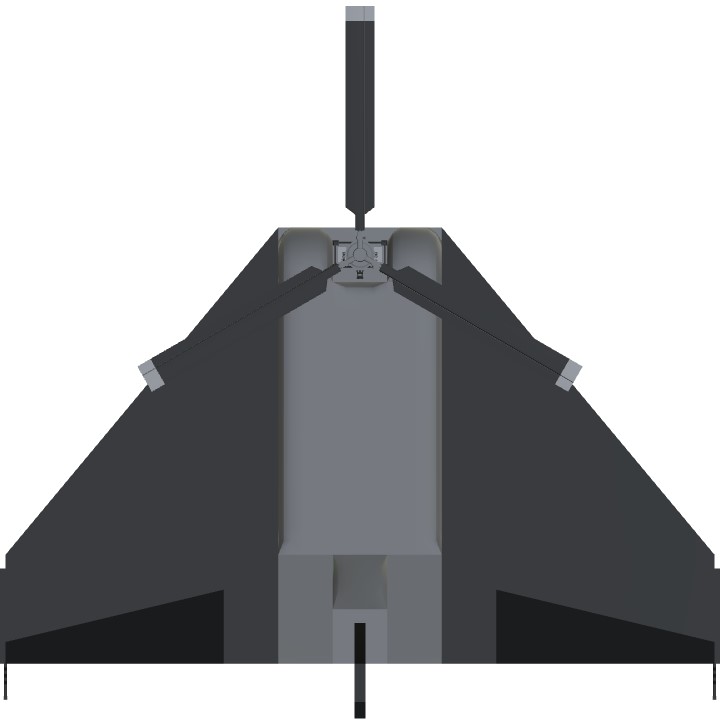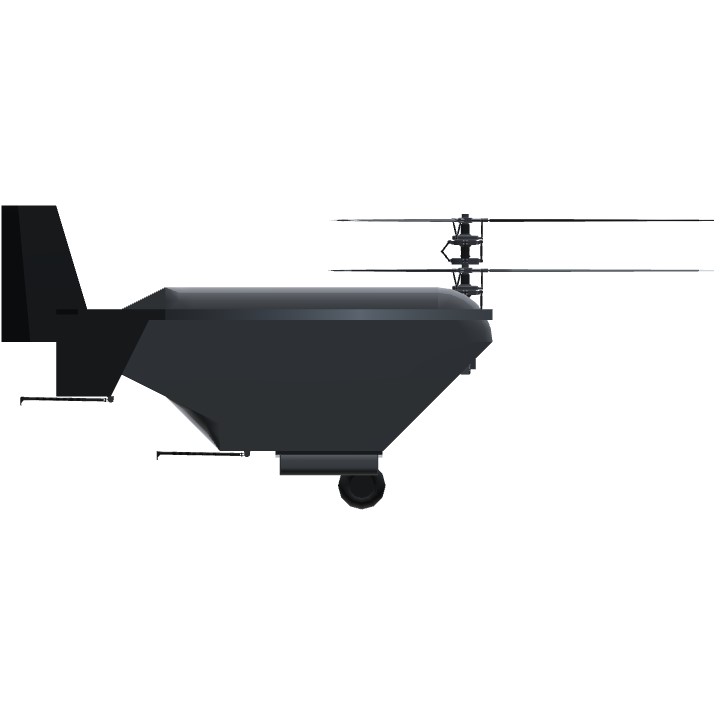SimplePlanes build of the prototype Convertiplane invented Franklin A. Dobson, designer of the (in)famous Waco CG-4 cargo glider of WWII.
Specifications
Spotlights
- Boeing7472 3.8 years ago
General Characteristics
- Created On Windows
- Wingspan 21.7ft (6.6m)
- Length 21.3ft (6.5m)
- Height 9.0ft (2.8m)
- Empty Weight 1,317lbs (597kg)
- Loaded Weight 1,600lbs (726kg)
Performance
- Power/Weight Ratio 3.93
- Wing Loading 10.3lbs/ft2 (50.5kg/m2)
- Wing Area 154.9ft2 (14.4m2)
- Drag Points 2484
Parts
- Number of Parts 68
- Control Surfaces 3
- Performance Cost 412





This was a real aircraft! Or, at least, my attempt at representing one. A group of us on Reddit's r/weirdwings have been trying to track down details and information about whether it ever flew; see !this thread for more info.
Details:
This version has:
- Working elevons,
- Cyclic input is suppressed above 150kph for smoother flying in aircraft mode.
- While hovering, rudder uses differential torque to rotate the correct direction (but the rotation sticks, so you have to manually counteract it).
- Camera is oriented for horizontal flight, while the cockpit is oriented for landing (if you are brave).
@Boeing7472 Thanks!
Let me help
Dude your new
@Sleet01
Take-off procedure 1:
1. Use Trim to rotate prop-rotors to point perpendicular to the ground. The hinge is too strong so do this slowly!
2. Set throttle to 100%.
3. Use VTOL to slowly increase collective until the nose just begins to lift up; drop VTOL by one click once this starts.
4. Smoothly raise Trim lever to ~95%; this will lift the nose further due to torque.
5. If the ship is generally upright, the shaft is generally perpendicular to the ground, and the plane is mostly stable: increase VTOL to 90% ~ 95% and take off. If not, you will probably crash and burn immediately.
6. Smoothly nose down to horizontal flight. Cyclic inputs to the prop-rotors phase out at 150kph.
7. Throttle down to ~50%. Trim Pitch using the Trim lever: lower is nose-up, higher is nose-down. Manage velocity using VTOL lever: less is slower, more is faster.
Take-off procedure 2:
1. Use Trim to rotate prop-rotors to nearly horizontal. Avoid letting the rotor tips touch the ground!
2. Throttle up to 100%.
3. Increase collective to ~95% using the VTOL lever.
4. Once in the air, immediately increase Trim to ~95%.
5. Follow steps 6, 7 as per procedure 1.
Landing procedure:
1. Approach landing point in horizontal flight; get to within about a kilometer at about 500 meters altitude (less with experience).
2. Decrease engine throttle to ~33%. Decrease VTOL to about 25%.
3. Extend landing gear.
4. Set Trim to about 90% (decreased thrust will change the Cg / Ct balance so try to find a stable point)
5. Pitch up to about 60-70 degrees on the Attitude Indicator ball. You will rise quickly while bleeding off airspeed; decrease VTOL to lower VSI until you begin sinking towards your landing area.
6. To speed up, pitch down; to slow down, pitch up. I find it easiest to land from the orbit view, but it is possible to land from the cockpit view.
7. Try to maintain a positive forward speed and negative VSI using cyclic, rudder, and VTOL controls only.
8. When the rear skids touch down, decrease VTOL slightly until the nose starts to drop slightly.
9. Smoothly reduce Trim to 0 and VTOL to 0.
10. Reduce throttle to 0%.
@Sleet01 Issues:
1. Too much VTOL will lead to blade stall while maneuvering. Do not exceed 95% VTOL in horizontal flight.
2. Adding VTOL and Trim too fast during takeoff will cause the ship to flip on its back and explode.
3. Fuel lasts about 90 seconds at 100% power.
4. Power-out landings are tricky because the rotor has a tendency to over-speed and explode, which somehow changes the Cg enough to make gliding landings impossible. Good luck.
To-do:
- Change engine power and throttle input limits to decrease fuel consumption.
- Add accurate paint applications: the real thing was white and orange!
- Make cockpit less ugly. The general shape is correct but it was almost all windows back to the rear half of the fuselage.
- Reduce fuselage parts weights to bring Cg forward and reduce overall gross weight to ~1,100 lbs
- Reduce wing size ~20%